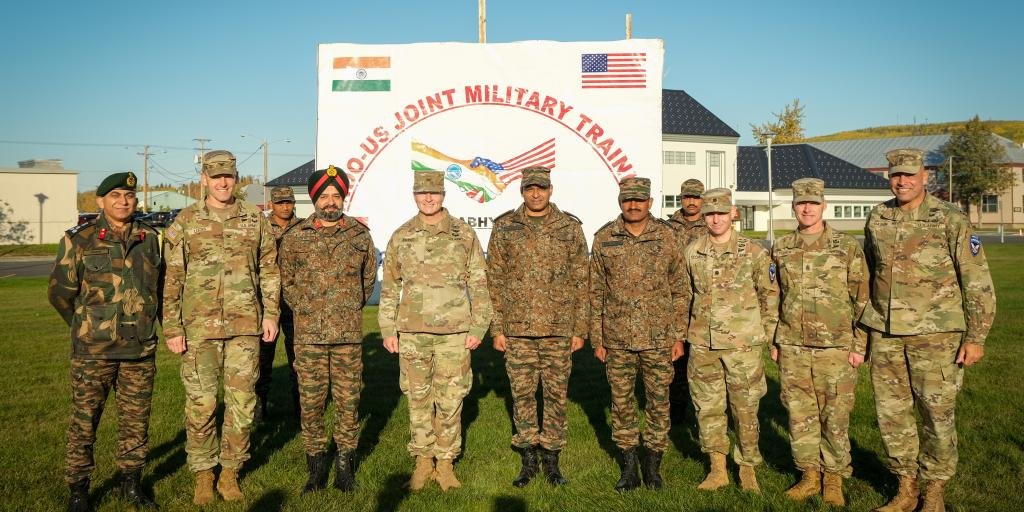
India and the United States will hold the next edition of their flagship field exercise, Yudh Abhyas, in Alaska from September 1 to 14, 2025, according to reports citing official sources. This comes at a particularly pivotal moment, as it will be the first large-scale India–US Army field exercise following India’s Operation “Sindoor” in May 2025, which came in the wake of the Pahalgam terror attack. The Alaska setting—rugged, cold, and logistically demanding—offers the two armies a realistic venue to sharpen military interoperability after a fraught summer in South Asia.
Context: Operation “Sindoor” and its strategic afterglow
Operation Sindoor, responding to the April 22, 2025, Pahalgam attack, initiated Indian strikes on May 7, 2025. As a result, Indian officials and many military analysts have viewed the operation as a significant shift in signaling, information warfare, and deterrence, seamlessly reshaping the narrative of India’s military will. This context sharpens Yudh Abhyas 2025, framing it as a tactical move to consolidate the lessons from the exercise and adapt strategies with a key security ally.
Why Pick Alaska Again? Interoperability in Extreme Environments
Alaska hosts previous iterations of Yudh Abhyas because of its mountain and cold weather training, which put to the test mobility, survival, medical evacuation, tactical communications, and combined arms maneuvers. Training in these conditions aids in reinforcing both forces’ ability to operate in high-altitude, Arctic, and sub-Arctic regions, which is increasingly important for the US Army as the Arctic theater gains strategic significance and for the Indian Army, which regularly operates in extreme terrain. Previous years’ editions conducted in Alaska have incorporated integrated battle group employment, live fire components, and cross practices of HADR. This is what we should expect this year, but on a larger scale.
What to watch: Objectives and probable emphasis during training

1) From combined small unit tactics and combined fires: From platoon- to company-sized exercises with advancing drill(s) as a validation test for comprehensive joint strategic execution of movement and fire support during extreme weather and low visibility conditions.
2) Mobility and sustainment in cold regions: Movement in ice and snow, equipment winterization, and logistics in dispersed operations even in real-world contingencies.
3) Counter-terror and counter-insurgency lanes: Urban breaching, intelligence-driven targeting, and information operations modules—areas highlighted in post-indoor analysis.
4) Medical and CASEVAC: Rapid extraction and hypothermia treatment plus joint MEDVAC techniques—crucial lifesaving skills where uniformity enhances outcomes.
Strategic signaling: Shift from trust to tariffs
Alaska Drill Yudh Abhyas, despite exacerbating supply chain woes, serves to highlight that despite existing policy barriers, cooperation in defense and logistics is thriving. After the Sindoor conflict, many thought the ensuing diplomatic efforts would bring an end to conflict-centric military exercises. However, military leaders from both sides continue to strengthen the military Indo-Pacific alliance and joint readiness, cross-domain integration, and multi-domain operations.
How success is measured—for soldiers and strategists
Soldiers will gauge success by improved radio communications, standardized maps and graphics, streamlined sequencing for fire control orders, and improved integration for logistically plugging into one another’s systems. For strategists, success is credible deterrence, which in this case shows the integration of two of the most advanced ground forces and their ability to jointly deploy, sustain, and engage in combat in harsh environments, which shifts political resolve into operative action. Operation Sindoor’s lessons on decision timelines alongside deception and information warfare will most probably guide scenario construction and analysis of the operation’s sequences and overall performance.
On the horizon: Annual drill, shifting focus
While the Yudh Abhyas is an annual exercise, its objectives are revised based on emerging threats. After the 2025 India-Pakistan flare-up, the Alaska edition serves a dual purpose as a stress test for combined readiness. It integrates crisis signaling (Sindoor), sustained deterrence (consistent high-end training), and the practical reflexes essential for coalition operations, ranging from humanitarian assistance and disaster relief to high-intensity conflict and spanning the Indo-Pacific and beyond.











